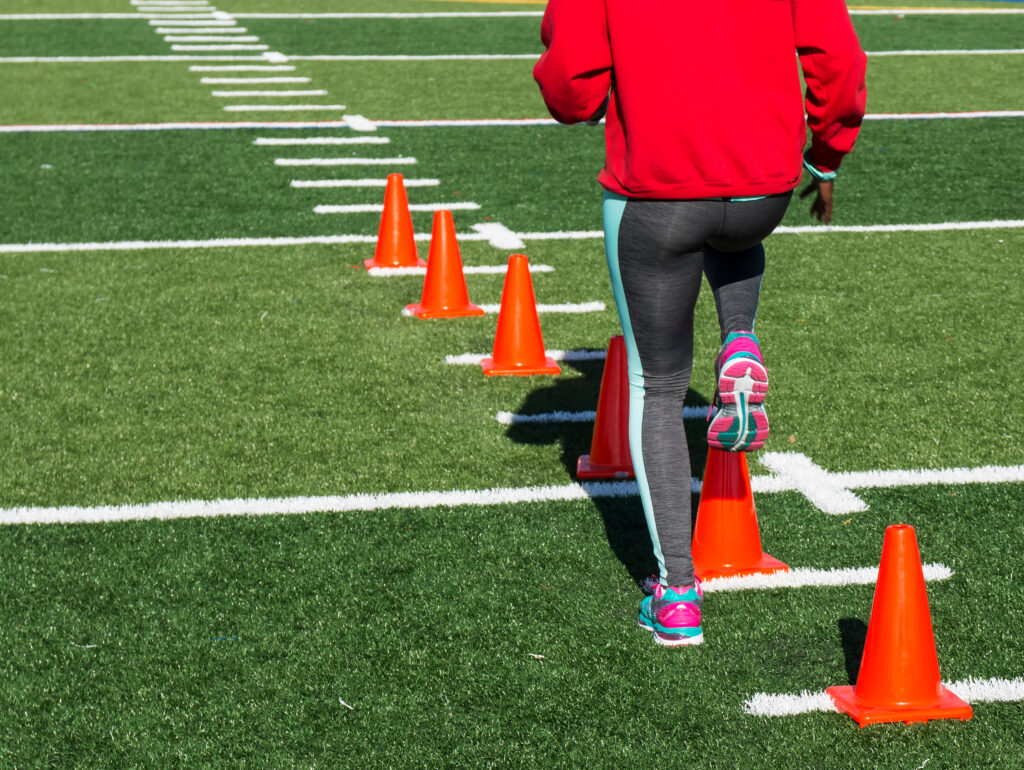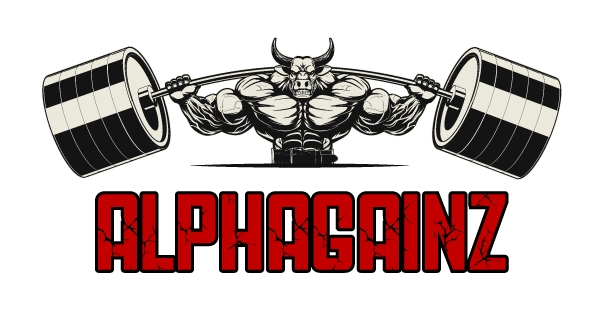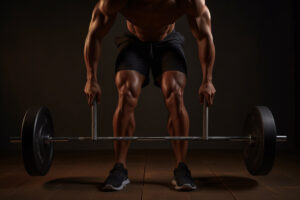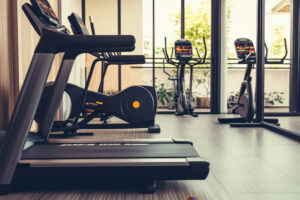Training athletes in Colorado Springs CO presents unique opportunities and challenges. The altitude, the concentration of elite competitors, and the diverse sports culture here demand specialized approaches to speed and agility training that produce real results.
After coaching hundreds of athletes – from youth soccer players to competitive powerlifters transitioning to functional movement – I’ve identified what actually works at elevation and what merely looks impressive on social media. SAQ (Speed, Agility, Quickness) training isn’t about running fancy drills. It’s about building neuromuscular efficiency that translates to sport performance.
Why Altitude Changes Everything
Colorado Springs sits at 6,035 feet. This significantly affects how athletes train and adapt. The reduced oxygen availability impacts both aerobic capacity and recovery between high-intensity efforts.

Speed & Agility Training in Colorado Springs, CO
For speed and agility training, this means intervals need modification. What works at sea level may leave athletes gasping here. Progressive adaptation is essential – new athletes need 2-4 weeks to adjust before pushing maximum intensity work.
However, altitude also provides advantages. Athletes who train consistently here develop superior oxygen utilization. When competing at lower elevations, they often experience noticeable performance improvements. The key is training intelligently while the body adapts.
Foundation: Movement Quality Before Speed
Every gym in Colorado has athletes running agility ladders and cone drills. Few address the movement limitations preventing those drills from being effective.
Speed and agility training built on poor movement patterns reinforces dysfunction at higher velocities. An athlete with limited ankle mobility will compensate during cutting movements, increasing injury risk and limiting performance.
Before adding speed, assess fundamental movement. Can the athlete maintain proper alignment during deceleration? Do they load properly before changing direction? Can they generate force from stable positions?
At our sports center, athletes spend initial sessions on movement screening and corrective work. This isn’t exciting, but it’s essential. Building speed on dysfunction is like constructing a house on a cracked foundation.
Linear Speed Development
Linear speed – straight-line running – forms the foundation. Even sports requiring constant direction changes benefit from pure acceleration and maximum velocity work.
Start with acceleration mechanics. The first 10-20 meters determine races and catch-up plays. Focus on optimal shin angles, powerful arm drive, and progressive force application. Athletes should feel like they’re pushing the ground away, not just moving their legs faster.
Resistance sprints using sleds, bands, or hill runs build the strength-speed that powers acceleration. These don’t need to be long – 10-30 meters produces maximum benefit without excessive fatigue.
Maximum velocity training requires different stimulus. Flying sprints with 20-30 meter build-ups into 10-20 meter maximum efforts develop top-end speed. Recovery between reps should be complete – this isn’t conditioning work.
Agility: More Than Cone Drills
True agility involves perceiving a stimulus, processing information, and executing an appropriate movement response. Pre-planned cone drills develop change-of-direction speed but not reactive agility.
Change-of-direction training has value. Athletes need efficient cutting mechanics – proper deceleration, stable plant positions, and explosive re-acceleration. These can be practiced with predetermined patterns.
But sport performance requires reacting to opponents, teammates, and unpredictable situations. Reactive agility drills incorporate decision-making under time pressure.
Simple progressions work well: Partner mirrors where one athlete leads and the other reacts. Ball drops requiring quick starts in random directions. Small-sided games emphasizing quick decisions and movements.
Technology helps but isn’t necessary. Light systems provide clear stimuli, but a coach pointing directions or dropping colored objects works fine.
Quickness: First-Step Explosion
Quickness – the ability to initiate movement rapidly from various positions – often determines who reaches the ball first or beats an opponent to a spot.
Sport-specific starting positions matter. Basketball players need lateral quickness from defensive stances. Soccer players require quick starts from multiple body orientations. Baseball players explode from static positions.
Plyometric progressions develop the rate of force development underlying quickness. Start with basic jumps emphasizing quick ground contact. Progress to bounds, hops, and multi-directional variations as competency develops.
Colorado’s variable weather sometimes forces training indoors. Even small gym spaces allow box jumps, hurdle hops, and medicine ball throws that build explosive power transferring to quickness.
Integration With Strength Training
Speed and agility training works best when integrated with comprehensive strength development, including powerlifting movements for athletes requiring maximal force production.
Squats, deadlifts, and their variations build the leg strength underlying all speed work. However, simply being strong doesn’t guarantee speed. Strength must be expressed quickly to benefit athletic performance.
Olympic lifting variations – cleans, snatches, jerks – bridge pure strength and explosive power. The rate of force development in these lifts directly transfers to acceleration and jumping.
Periodization matters. Heavy strength phases reduce volume of speed work. Power phases increase explosive training. Competition phases maintain strength while emphasizing sport-specific speed and agility.
Metabolic Conditioning for Game Speed
Game speed differs from fresh-condition speed. Athletes must execute quick movements while fatigued, often repeatedly with minimal recovery.
Conditioning that mimics sport energy demands prepares athletes for this reality. Soccer requires repeated sprints with incomplete recovery. Basketball demands quick movements interspersed with moderate activity. Wrestling requires sustained high-intensity effort.
Design conditioning around sport demands. Don’t just run athletes into the ground – structure intervals matching their competitive requirements. This develops the specific endurance allowing speed and agility to persist throughout competition.
Injury Prevention Through Movement Preparation
Speed and agility training at high intensities stresses tissues significantly. Proper preparation reduces injury risk while optimizing performance.
Dynamic warm-ups emphasizing movement ranges, activation of key muscle groups, and progressive intensity prepare the body for high-level demands. This isn’t optional – it’s fundamental to sustainable training.
Cool-downs and recovery protocols matter equally. Soft tissue work, stretching, and low-intensity movement facilitate recovery between sessions. Athletes training intensely multiple times weekly need systematic recovery strategies.
Measuring Progress
Effective training requires objective measurement. Timed sprints, change-of-direction tests, and jump assessments provide concrete data showing improvement or identifying problems.
At our sports center in Colorado Springs, we test athletes every 4-6 weeks. This reveals whether training produces desired adaptations or needs adjustment. Numbers don’t lie – subjective feelings about improvement often do.
Technology offers sophisticated measurement options – timing gates, force plates, GPS tracking. However, simple stopwatches and measuring tape provide adequate feedback for most athletes. Perfect measurement isn’t necessary; consistent measurement is.
Sport-Specific Application
Generic speed and agility training provides base development, but sport-specific application determines competitive success. A basketball player’s agility needs differ from a hockey player’s despite both requiring quick movements.
Study movement demands specific to your sport. Which speeds predominate? What directions change most frequently? What positions require quickest reactions?
Then design training emphasizing these demands. Sports demanding maximal sprinting require more linear speed work. Sports with constant direction changes need greater agility emphasis. Match training to competitive requirements.
Training Frequency and Recovery
SAQ training is neurologically demanding. Unlike steady cardio, high-quality speed and agility work requires full recovery between sessions.
For most athletes, 2-3 dedicated SAQ sessions weekly combined with sport practice produces optimal results. More frequency risks diminishing quality as fatigue accumulates. Lower frequency provides insufficient stimulus for adaptation.
Listen to your body. At Colorado altitude, recovery sometimes requires more time than at sea level. Pushing through excessive fatigue produces poor movement patterns and increases injury risk.
The Long-Term Approach
Speed and agility development is a multi-year process, not a six-week program. Young athletes build foundation through varied movement experiences. Advanced athletes pursue marginal gains through refined techniques and targeted weaknesses.
In Colorado Springs’ competitive environment, athletes sometimes seek shortcuts. None exists. Consistent, intelligent training over months and years produces real improvement. Flashy programs promising dramatic results in weeks usually disappoint.
Focus on progressive development. Master fundamentals before advancing to complex variations. Build work capacity gradually. Allow adaptations time to solidify before adding new stresses.
The athletes achieving the highest levels combine talent with unwavering commitment to process. They show up consistently, train intelligently, recover appropriately, and trust that results compound over time.





